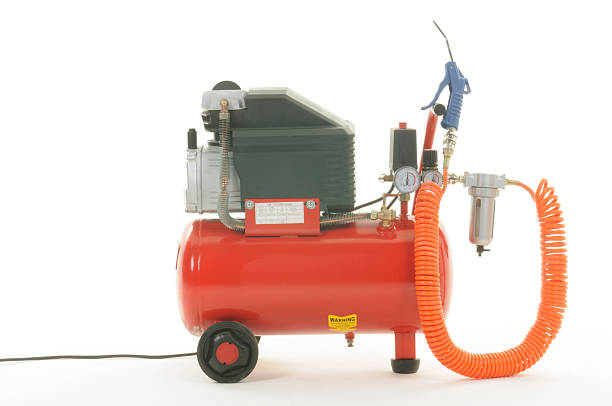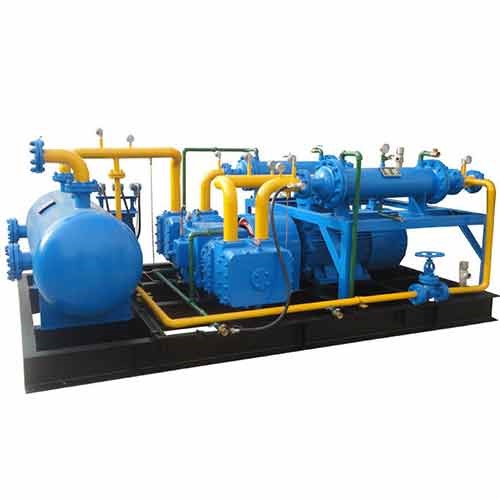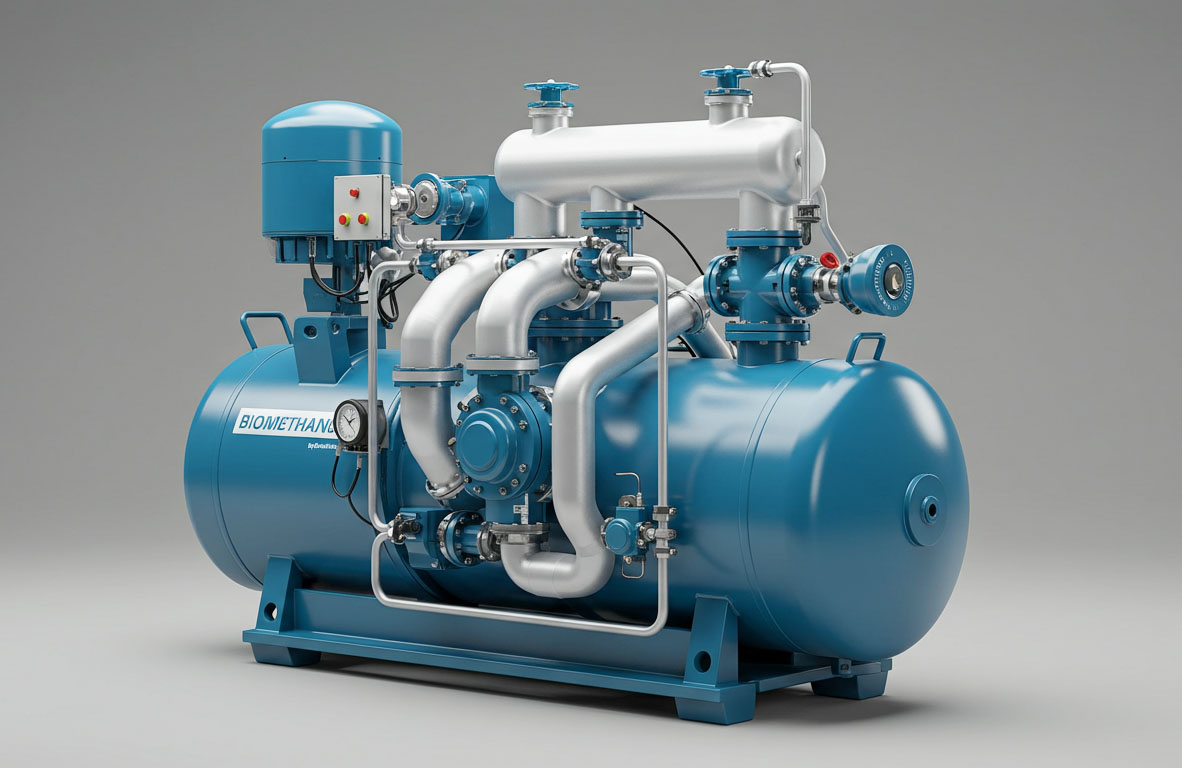Choosing the Right Reciprocating compressor: A Buyer’s Guide
A Comprehensive Guide to Large Reciprocating compressor
Reciprocal compressors are essential pieces of equipment for a wide range of industrial settings, from manufacturing and oil refineries to air conditioning and refrigeration. This manual delves deeply into the field of reciprocating compressors, examining their benefits, uses, mechanics, and upkeep.
What Kinds of LARGE Reciprocating compressors Are There?
Depending on how many compression stages there are, reciprocating compressors fall into two categories:
- Single-stage reciprocating compressors:
These compressors have a simpler design and a cheaper starting cost since they only compress air in one step. They might not be appropriate, therefore, for uses involving extremely high pressure.
- Reciprocal compressors with two stages:
These compressors compress air twice, producing greater pressure output and lower operating temperatures. Applications requiring continuous usage and increased pressure are best suited for them.
Maintaining Your large Reciprocating compressor: A Guide to Peak Performance
Your dependable reciprocating compressor powers a wide range of commercial and industrial uses. It will continue to provide effective, clean compressed air delivery with proper maintenance. This is a thorough guide to maintaining the smooth operation of your reciprocating compressor:
- Oil Changes:
It’s important to change the compressor oil regularly. For information on the particular oil type and frequency of changes, consult the manufacturer’s instructions. Depending on use, oil changes are usually necessary every 500–1,000 operating hours or every three to six months.
- Cleaning of the air filter:
A clogged air filter limits airflow and lowers effectiveness. As directed by the manufacturer, clean or replace the air filter element. Depending on the working climate, this is often advised every one to three months.
- Maintenance for the drain valve:
The compressor tank becomes wet. For best results and to avoid corrosion, empty the condensate from the tank’s drain valve regularly. It may need to be drained every day in humid settings.
- Visual Inspection:
Check for leaks, loose components, and wear-and-tear indicators visually regularly. Check the area surrounding fittings and hoses for oil leaks. Retighten any loose wires. Any difficulties should be resolved quickly to avoid worse ones.
Benefits of Regular Maintenance:
- Your reciprocating compressor will last longer if you do routine maintenance to minimize wear and tear.
- Regular maintenance guarantees that your compressor runs smoothly and produces the necessary amount of compressed air.
- Since a well-maintained compressor uses less energy, its running expenses are reduced.
- Preventing unplanned malfunctions with routine maintenance reduces downtime and related expenses.
- By keeping your compressor’s safety measures in good working order via routine maintenance and inspections, you can reduce the chance of mishaps.
The Power Players: Key Components of a Reciprocating Compressor
These reciprocating compressors, a dependable workhorse behind several industrial and commercial applications, depend on a well-oiled team of parts. Let’s examine the main actors who contribute to the operation of this compressed air powerhouse:
- Cylinder:
The cylinder, which is the compressor’s main component, is a pressure-resistant chamber used to compress air. Constructed from robust materials such as cast iron, it contains a piston and facilitates effective compression of air.
- Piston
One reciprocating component that goes back and forth within the cylinder is the piston. It is a vital component of the compression process and is attached to a piston rod. During the intake stroke, the piston pulls in air, and during the discharge stroke, it compresses that air.
- Piston Rings:
The cylinder wall and piston are tightly sealed by these rings. They guarantee effective compression and stop compressed air from seeping back into the crankcase.
- Connecting Rod:
The connecting rod transforms linear action into rotational motion by relaying the piston’s reciprocating motion to the crankshaft.
- Crankshaft:
The connecting rod’s reciprocating action is received by this spinning shaft, which transforms it into rotary motion for the compressor. An essential connection point for the piston and the rest of the drive system is the crankshaft.
- Valve:
The intake and discharge valve sets are the two main types of valves found in reciprocating compressors. On the intake stroke, the intake valves permit air to enter the cylinder, and on the discharge stroke, the discharge valves permit compressed air to depart the cylinder. These valves provide effective airflow direction.

The Versatile Powerhouse: Applications of large Reciprocating compressor
Reciprocating Compressor versatility and dependable performance make it a well-liked option for a broad variety of applications in several industries. Let’s look at a few uses for these compressors that work well:
Industrial Uses:
- Pneumatic Tool Operation:
These reciprocating compressors supply the compressed air required for a variety of pneumatic tools, from drills and impact wrenches in assembly lines to nail guns and sanders in woodworking shops.
- Air Operated Equipment:
Tire inflation systems, abrasive blasting cabinets, and spray-painting booths are just a few examples of industrial equipment that these compressors are ideal for powering.
- Machine Actuation:
In industrial contexts, they can be used to actuate valves, control mechanisms, and other pneumatic systems.
- Food and Beverage Processing:
These reciprocating compressors are used in the food and beverage sector for jobs including product transport, bottle cleaning, and mixing apparatus operation.
- Chemical Processing:
Pneumatic conveyance, agitation, and instrument control are just a few of the uses for these compressors in the chemical industry.
The Future of Compressed Air: Technological Advancements in Reciprocating Compressors
Dependable reciprocating compressors are always changing. Here’s a look at what lies ahead:
- To cut down on energy usage, concentrate on better motor designs and variable-speed drives.
- Using sensors and the Internet of things (IoT) together to provide predictive maintenance, remote monitoring, and optimal performance.
- Investigating stronger, lighter materials for essential components to increase lifetime and efficiency.
- Creating quieter operating systems in response to noise pollution issues.
For operations that care about the environment, look into the usage of low-emission lubricants and alternative refrigerants.
Conclusion:
LEiYAO Compressors is prepared to meet client demands and provide goods at a reasonable cost. Our organization consistently upholds a quality philosophy that prioritizes total participation, a dedication to excellence, customer satisfaction, and continual improvement across our production and operational operations.


